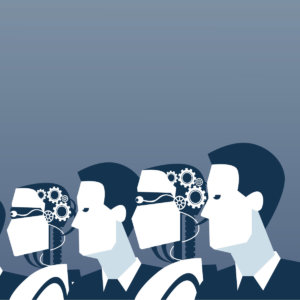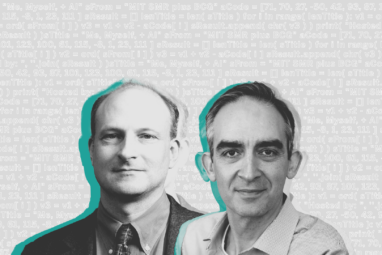How Organizations Will Produce in an Autonomous Future
Can AI-enabled automation replace your company’s entire labor force?
Topics
Artificial Intelligence and Business Strategy
In collaboration with
BCGHow much will technology change affect labor? According to research informing our 2017 research report, “Reshaping Business with Artificial Intelligence,” not as much as one would expect. Less than half of more than 3,000 survey respondents expect AI to reduce their organization’s workforce in the next five years, and just 30% are fearful that AI will automate their own jobs. But as technology relentlessly improves, significant changes may still be on the horizon. To what extent can AI-enabled automation replace the entire labor force of an organization?
Consider these companies:
- The Moby Mart, a store on wheels, brings groceries to customers in Shanghai. Unlike most other retailers, each mobile store has no staff, not even cashiers.
- The Aidyia hedge fund consolidates recommendations generated with multiple types of artificial intelligence. Free from the constraints of physical products, algorithms trade digital assets without human involvement.
- BottleKeeper, a producer of stainless steel containers, has no employees.
These companies, encompassing both physical and purely digital products, showcase the potential of autonomous companies. They are taking the replacement of labor with technology to an extreme. While most organizations are far from this extreme, what can managers in far less autonomous companies learn from — and be wary of — the trend toward autonomous companies?
Moving Remaining Labor Outside the Company
An autonomous hedge fund such as Aidyia’s probably surprises us less than an autonomous retail store. Since information products are already digital, full automation seems more natural.
But Moby Mart and BottleKeeper are decidedly based on physical goods. Modern information and communication technologies enable the automation of most of the companies’ labor. Then, specialized external companies perform any aspects that still require labor (such as manufacturing or delivery). Furthermore, because these external partners work with many other companies, economies of scale enable Moby Mart or BottleKeeper to execute aspects that still require labor better and cheaper than they would get by using internal employees — for example, it is hard to duplicate the reach and efficiency of global delivery companies.
Ask yourself, Do any labor-intensive tasks still need to be internal to your organization?
Trading Fixed and Variable Costs
Even if Moby Mart, Aidyia, and BottleKeeper operate autonomously, they aren’t completely autonomous companies. Instead, these companies made strategic decisions to invest in fixed costs to avoid variable costs.





